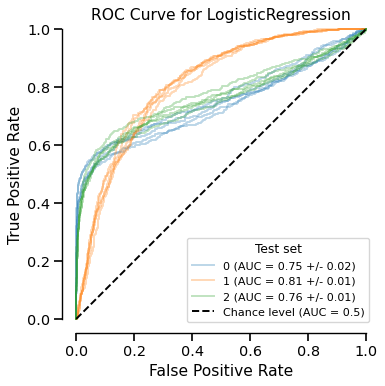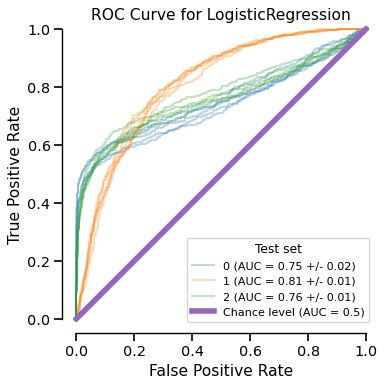Visualization via the skore display API#
skore provides a family of objects that we call displays. All displays follow the
common API defined by the Display protocol. As a user, you get a display by
interacting with a reporter. Let’s provide an example:
from sklearn.datasets import make_classification
from sklearn.linear_model import LogisticRegression
from skore import CrossValidationReport
X, y = make_classification(
n_samples=10_000,
n_classes=3,
class_sep=0.3,
n_clusters_per_class=1,
random_state=42,
)
report = CrossValidationReport(LogisticRegression(), X, y)
disp = report.metrics.roc()
disp.plot()

The EstimatorReport.metrics.roc() creates a RocCurveDisplay object. The
first available method with the skore display is a plot method. It shows graphically
the information contained in the display. Call it as many times as you want - it does
not modify the display object nor require heavy computation.
disp.plot()

The plot method accepts parameters to tweak the rendering of the display. For
instance, customize the appearance of the chance level:
disp.plot(
chance_level_kwargs=dict(
linestyle="-", linewidth=5, color="tab:purple"
)
)

To avoid passing parameters at each call to plot, use the set_style method to
persist style settings.
disp.set_style(
chance_level_kwargs=dict(linestyle="-", linewidth=5, color="tab:purple")
)
disp.plot()

Any subsequent call to plot uses the style settings set by set_style.